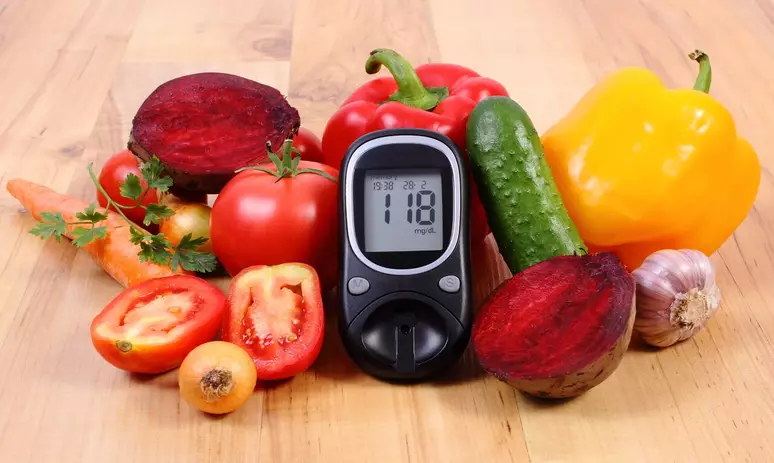The Key to Balance: The Role of Diet in Diabetes Management
Foods with the Best Glycemic Index

Diabetes, a chronic condition that affects how the body processes blood sugar (glucose), requires careful daily management, with diet being the central pillar of this care. Monitoring carbohydrate intake, and more specifically, paying attention to the Glycemic Index (GI) of foods, are crucial strategies for maintaining stable blood sugar levels and preventing long-term complications.
The Glycemic Index measures the speed and intensity with which a food raises blood sugar levels after consumption. Low GI foods are digested more slowly, resulting in a gradual release of glucose into the bloodstream. This process is fundamental for people with diabetes, as it prevents hyperglycemic spikes and reduces the need for large doses of insulin.
We consulted the view of nutrition experts, who emphasize: the smart choice of low GI foods is not a restriction, but a powerful tool for metabolic health. Below, we explore what diabetes is, the importance of the GI, and list 6 strategic food groups that should be part of the management diet.
READ ALSO:
- Quick Exercise for Lower Back Pain Relief: Simple Moves That Work
- Does Running Help You Lose Weight? How to Start and Progress Without Losing Your Breath
Follow our PAGE
Diabetes: An Overview and the Importance of the Glycemic Index
Diabetes occurs when the pancreas either does not produce enough insulin (Type 1) or when the body cannot use insulin effectively (Type 2). Insulin is the hormone responsible for allowing glucose to enter cells and be used for energy. Without proper control, glucose accumulates in the blood, resulting in chronic hyperglycemia.
The Long-Term Impact of High Blood Sugar
In the long term, high blood sugar levels damage nerves and blood vessels, potentially leading to serious complications such as cardiovascular disease, kidney failure, vision damage, and neurological problems (neuropathy). This is why dietary control, focused on the GI, is an essential preventive measure, according to the nutritionist’s view.
High GI foods (such as white bread, sweets, and sodas) cause a rapid rise in glucose, overwhelming the system that is already compromised by insulin resistance or deficiency. In contrast, low GI foods help maintain a flatter, more stable baseline, protecting the patient’s vascular system.
The 6 Essential Food Groups with Low Glycemic Index
To ensure effective glycemic control without sacrificing the pleasure of eating, the nutritionist recommends focusing on foods rich in fiber, healthy fats, and protein, which naturally have a low Glycemic Index.
1. Legumes (Beans, Lentils, and Chickpeas)
Legumes are true superfoods for diabetes control. They are rich in soluble fiber and protein, which drastically slows down digestion and glucose absorption. Their GI is remarkably low, and regular consumption aids in the feeling of satiety, which is beneficial for weight management.
2. Whole Grains (Oats and Barley)
Unlike refined grains (which have a high GI), oats and barley, when consumed in their whole form, retain the bran and germ layer, where fiber and nutrients are concentrated. Oats, in particular, contain beta-glucan, a fiber that forms a gel in the stomach, decreasing the rate of gastric emptying and, consequently, glucose absorption.
3. Leafy Vegetables and Broccoli
All green vegetables, especially leafy greens (spinach, kale) and cruciferous vegetables (broccoli, cauliflower), have an extremely low GI. Their composition is primarily water and fiber, meaning they have a negligible impact on glucose levels. Furthermore, they provide essential antioxidants and vitamins to combat oxidative stress, a common consequence of diabetes.
4. Berries (Strawberries and Blueberries)
Although fruits contain sugar (fructose), berries stand out for their low fructose content and high amount of anthocyanins, powerful antioxidants. They have a lower GI than fruits like bananas or mangoes, and their fiber helps moderate the impact of fructose on blood sugar.
5. Nuts and Seeds (Almonds and Flaxseed)
Nuts and seeds (such as almonds, walnuts, flaxseed, and chia) are rich in healthy unsaturated fats and protein. The significant presence of these nutrients means their GI is very low, as they do not convert rapidly into glucose. Including them as snacks helps stabilize blood sugar levels between meals and promotes cardiovascular health.
6. Lean Proteins (Fish and Eggs)
Proteins (found in fish like salmon, skinless chicken, and eggs) have a GI of zero, as they contain no carbohydrates. They not only do not raise blood sugar but also contribute to satiety and help maintain muscle mass, an important factor for insulin sensitivity. Salmon, in particular, provides Omega-3 fatty acids, which are anti-inflammatory and protect against heart disease.
Tips from the Nutritionist: Strategies to Optimize Daily GI
The GI concept must be used intelligently. The nutritionist emphasizes that the GI of a meal depends not only on the isolated food but on its entire composition.
Combine Proteins and Healthy Fats with Carbohydrates
One of the best strategies is never to consume carbohydrates (even those with moderate GI, like brown rice) alone. Adding a protein source (egg, chicken) or healthy fat (olive oil, avocado) to a meal slows down the digestive process, reducing the meal’s overall GI. For example, eating a slice of whole-grain bread with olive oil and cheese (protein/fat) will have a lower glycemic impact than consuming the whole-grain bread alone.
Prefer Less Processed Foods
Processing removes fiber and other components that help “encapsulate” the carbohydrate. The more processed a food is, the higher its GI tends to be. Therefore, whole-grain bread with visible grains has a lower GI than refined whole-wheat bread. Sweet potatoes, boiled or baked, have a lower GI than mashed potatoes, where the starch cells are completely broken down.
Don’t Rely Only on GI: Consider Glycemic Load (GL)
While the GI is important, the Glycemic Load (GL) offers a more complete picture. GL considers the food’s GI and the amount of carbohydrates consumed in one serving. For example, watermelon has a relatively high GI, but a normal serving contains few carbohydrates, resulting in a low GL. It is the GL that best predicts a meal’s impact on blood sugar.
Conclusion
Managing diabetes through diet is an exercise in awareness and strategy. Attention to the Glycemic Index is a powerful tool that, when well-applied, allows the patient to make food choices that promote glycemic stability and long-term health. By incorporating the 6 low GI food groups—legumes, whole grains, vegetables, berries, nuts/seeds, and lean proteins—the individual with diabetes is not only controlling their blood sugar but is adopting a lifestyle that protects their cardiovascular and nervous system, ensuring a higher quality of life and longevity.

Hello! My name is Alan Teixeira and I am passionate about helping people live healthier, more balanced lives. From mindful eating to daily habits that promote physical and mental well-being, I believe that small, consistent changes can lead to powerful transformations.
I created this blog to share practical tips, reliable information, and thoughtful insights that can inspire you to take better care of yourself—with balance, mindfulness, and positivity.
If you are looking to improve your health, nourish your body, and build a lighter, more fulfilling routine, you are in the right place. Welcome!

